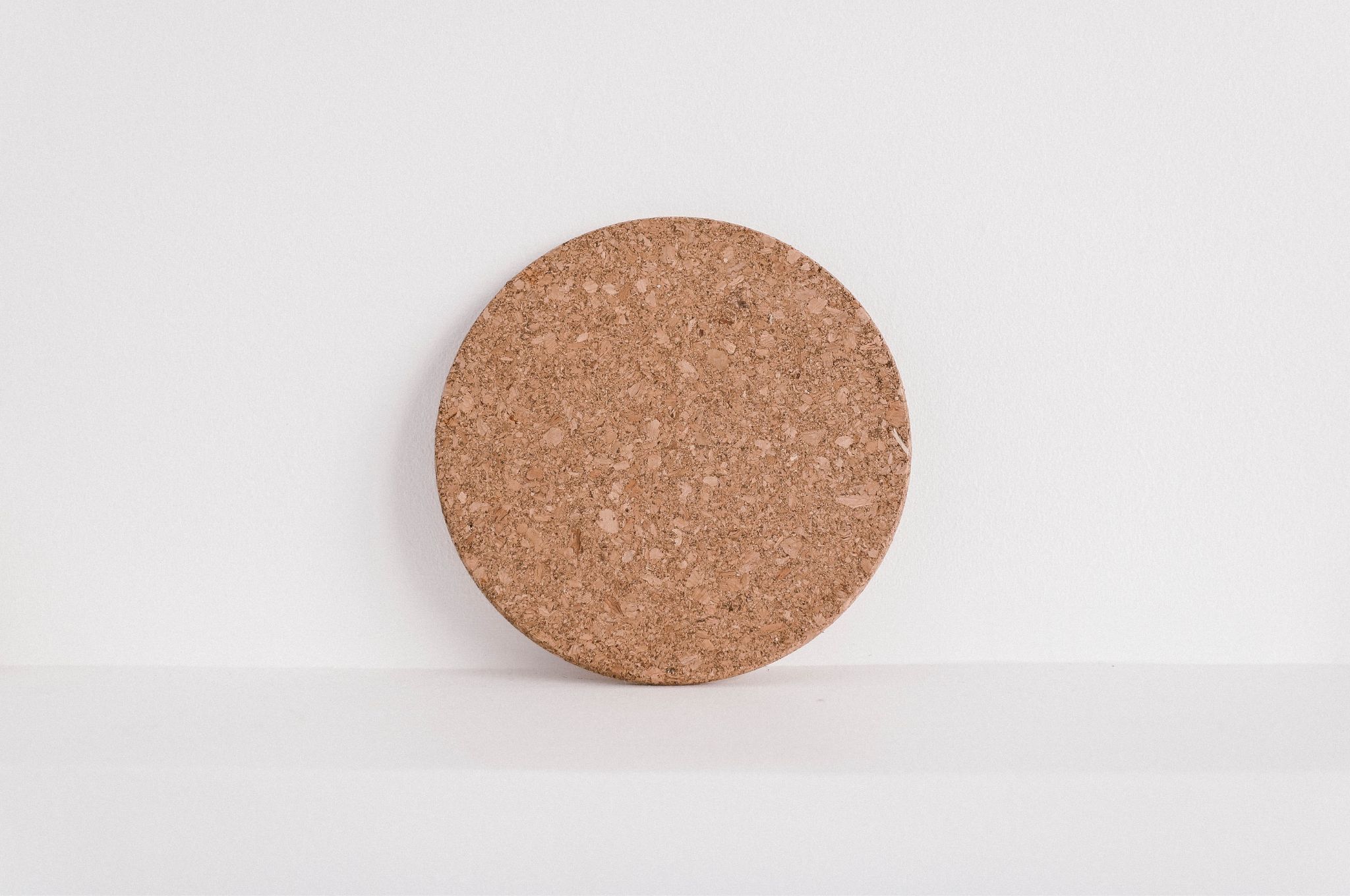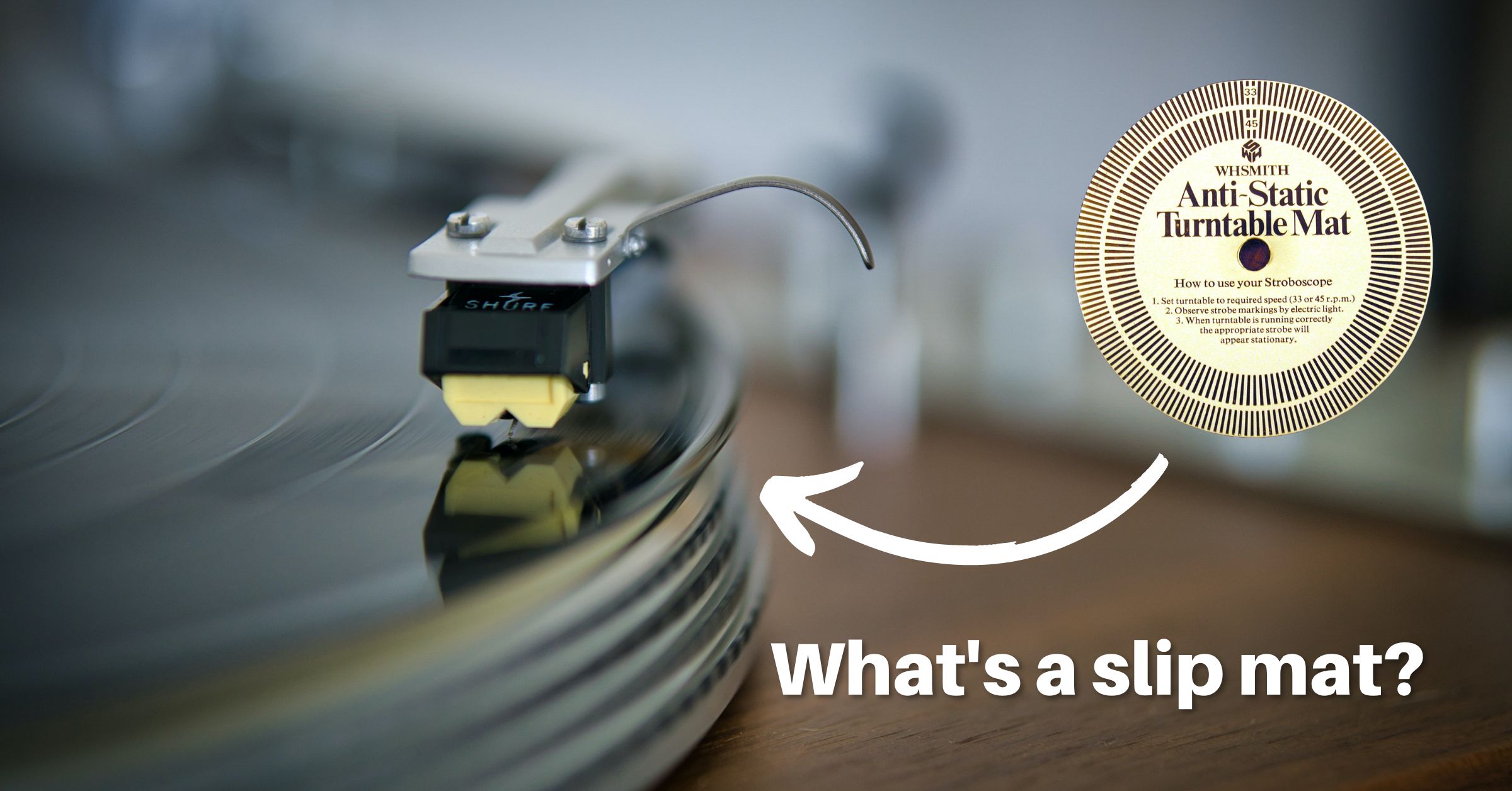Turntable slipmats come in a variety of styles and materials. Because most turntables and record players come pre-equipped with a slip mat, we often overlook the importance these simple items serve and the rich history they have.
In this article, we’ll take a look at what exactly a slip mat is, what purposes they serve, and what attributes make an optimal design that will take your vinyl records to the next level.
What is the point of a slipmat?
A modern slipmat is a circular piece of material that sits on top of a record player platter and prevents records from slipping during playback. Depending on the materials use in the design, slip mats can also help to prevent static electricity build-up and vibrations.
Modern slipmats are designed to serve four primary functions:
- Increase traction to prevent slipping
- Reduce vibrations that account cause skipping
- Reduce static electricity
- Add an aspect of personalization and character to an individual’s record player
When we say “modern slipmats” we are referring to most slipmats that come on consumer turntables and record players where the primary function is for music enjoyment, not manipulation (e.g. a DJ). A DJ slipmat serves a different purpose, which will explain later.
The history of the slipmat

A slipmat isn’t always used to keep a record firmly in place; in fact, quite the opposite.
Felt slipmats are used by DJs to allow the record to continue to be turned, even during playback. This allows for DJs to make minute adjustments and achieve techniques like scratching, beatmatching, and slip-cueing.
Grandmaster Flash is credited with inventing the felt DJ slipmat, which he used to easily slide the record back and forth. Flash’s mother was a seamstress, so he was familiar with a variety of different materials which allowed him to come up with the design that is now used by nearly every DJ in the world. (source)
Do you need a slipmat for a record player?
Yes, you need a slipmat for every record player regardless of if you’re DJing or just casually listing to music. Slipmats not only protect your records, but they improve the sound quality and overall listening experience.
Most modern turntables will come with a turntable platter mat, but if you’re missing one they are a relatively inexpensive purchase to make that can go a long way. Turntable mats have come a long way since the days of Grandmaster Flash and we recommend every viny listener have one.
Different types of turntable slipmats

There are a variety of different materials a slipmat can be made out of. Each material has properties that could be considered desirable by some, but not by others. Here are the five main materials modern turntable mats are made out of.
Felt
As discussed in the history section, a felt slipmat is a slippery cloth used by DJs for making minute adjustments to records while playback. A felt mat may come with direct drive turntables such as the Technics SL-1200 or other DJ-focused players.
Felt is great for DJs who need to manipulate tracks, but they don’t odder too much in the way of traction, vibration mitigation, and especially static prevention.
Unless you’re a DJ, we recommend not using a felt mat for casual listening.
Rubber
Rubber mats are some of the most common turntable mats. A traditional rubber mat is often included with most turntables as standard issue.
Rubber mats provide great traction as they firmly hold the record in place. Additionally, rubber provides moderate vibration control as well.
Unfortunately, a rubber mat lacks static prevention, so you’ll often hear pops of static electricity during playback. They also tend to look pretty plain, so if personalization and aesthetics are important to you, a rubber mat is not the way to go.
Cork
Cork mats are often purchased aftermarket and don’t commonly come stock with many turntables. Cork is relatively inexpensive and a logical cheap upgrade for many turntable owners.
A cork mat provides great traction and static control. However, there is less give in cork, so vibration prevention and basically nonexistent.
Leather
Leather is a less common slipmat material with an elegant visual appeal. In terms of quality, it sits in between felt and rubber mats.
Since the material is thin, they provide very little vibration control, however, they do prevent a good deal of static from affecting playback. They tend to provide more traction than a felt mat, but not as much as a rubber or cork mat would.
If you’re looking for an elegant slipmat in between rubber and felt, leather is the way to go.
Acrylic
Acrylic platters and slipmats are considered some of the best for vinyl listening. Material-wise, acrylic is a very similar material to vinyl, so the two naturally fit together very well.
Because of this, an acrylic platter mat has excellent static prevention, traction, and vibration prevention. Additionally, an acrylic slipmat can be made in a variety of different colors that allow you to match the room decor.
Turntables can be upgraded with dedicated acrylic platters which negate the need for a slipmat altogether.
What type of slipmat is best?
Acrylic is considered to be the best type of turntable slipmat because of its increased record surface contact which helps improve traction, reduce static electricity, and mitigate vibrations during record playback. This improves the overall listening experience and prevents damage to the record and stylus.
An acrylic turntable platter slipmat is a small and inexpensive way of ensuring your records are taken care of while also improving the sound quality of your setup. For more information check out our article about buying an acrylic turntable mat.

Lead Editor / Owner
After beginning his career in the video and audio recording industry, Andrew started HiFi Hippo to share his knowledge and passion for vinyl and vintage audio with other readers.
